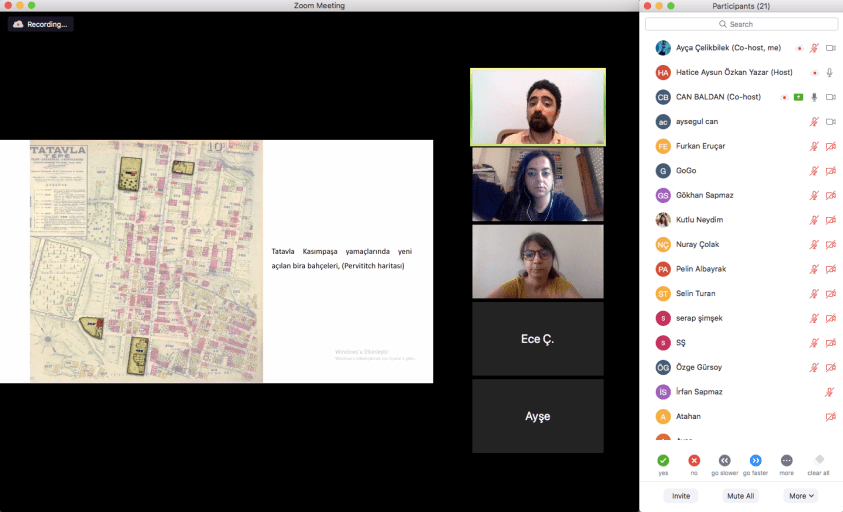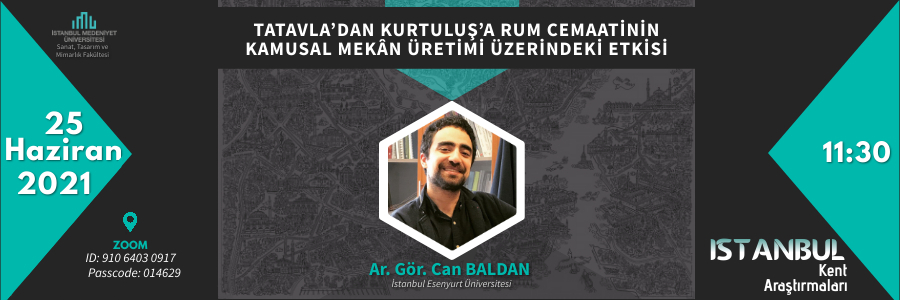The 11st seminar of the “Istanbul Urban Studies” seminar series organized by the Department of Urban and Regional Planning of Istanbul Medeniyet University moderated by our Urban and Regional Planning Department member Res.Asst. Ayça ÇELİKBİLEK was held online on Thursday, 28th June 2021, with a presentation by Res.Asst. Can BALDAN from Istanbul Esenyurt University. BALDAN delivered a presentation titled “Tatavla’dan Kurtuluş’a Rum Cemaatinin Kamusal Mekân Üretimi Üzerindeki Etkisi” (The Impact of Greek Community on the Production of Public Space from Tatavla to Kurtuluş).
BALDAN discussed the interactions among ethnic groups and their relationships with the city from the 17th century to the present by examining the case of Kurtuluş (Tatavla) district as a Greek settlement. He started his presentation by providing a theoretical background for the concepts like social capital, public space, cultural change, and collective memory and clarified the changes in urban space made by Greek population using the theoretical frame. He narrated the migration period of Greek population (working as dockhands) from Kasımpaşa port area to Tatavla after the great fire, their integration process and how the native population treated them inclusively between the 18th and 19th centuries. He mentioned the relationship between dock workers and Ottoman authority in the 19th century. He also pointed out at the informal networks between Greek population in Kurtuluş and non-Muslim merchants settled in Taksim/Pera which increased because of geographical proximity. BALDAN said that while the population of Kurtuluş was dramatically increasing due to the Pera fire and tram, Greek community was enlivening the district with Tatavla Carvinal by using streets and squares as a theater stage. He added that the Muslim population was not familiar with this kind of use of urban space until then. The fountains, schools, churches and bathhouses were among the most important structures in the district. Referring to apartmentization period in Kurtuluş starting right after the tram construction in the 20th century, BALDAN said that although the first apartment buildings belonged to the non-Muslims, the idea of religion-based settlements was now breaking down. He said that Greeks formed the majority of the population in Kurtuluş district until the end of the 1950’s and socio- cultural integration started to shape right after the 1980’s by Muslim population settling in Kurtuluş area.
In the following q/a session, reflections of Tatavla Carnival on today’s culture as an intangible cultural heritage, the lifestyle of minorities, and the urban dynamics they created and used as a center of attraction by the real estate market were discussed.


